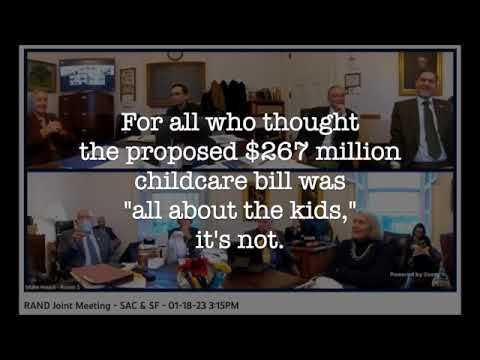The $383 million Vermont childcare proposal is not “for the kids”
Senator Dick Sears (D-Bennington) committed candor during a presentation on how the state might pay for the $383 million (a year) total tax bill associated with a proposal to expand Vermont’s state subsidized childcare programs. “Our goal here is to get a more comfortable workforce,” admitted Sears. “That’s what I’ve heard from my employers…. I’m not go…
Keep reading with a 7-day free trial
Subscribe to Behind the Lines: Rob Roper on Vermont Politics to keep reading this post and get 7 days of free access to the full post archives.



